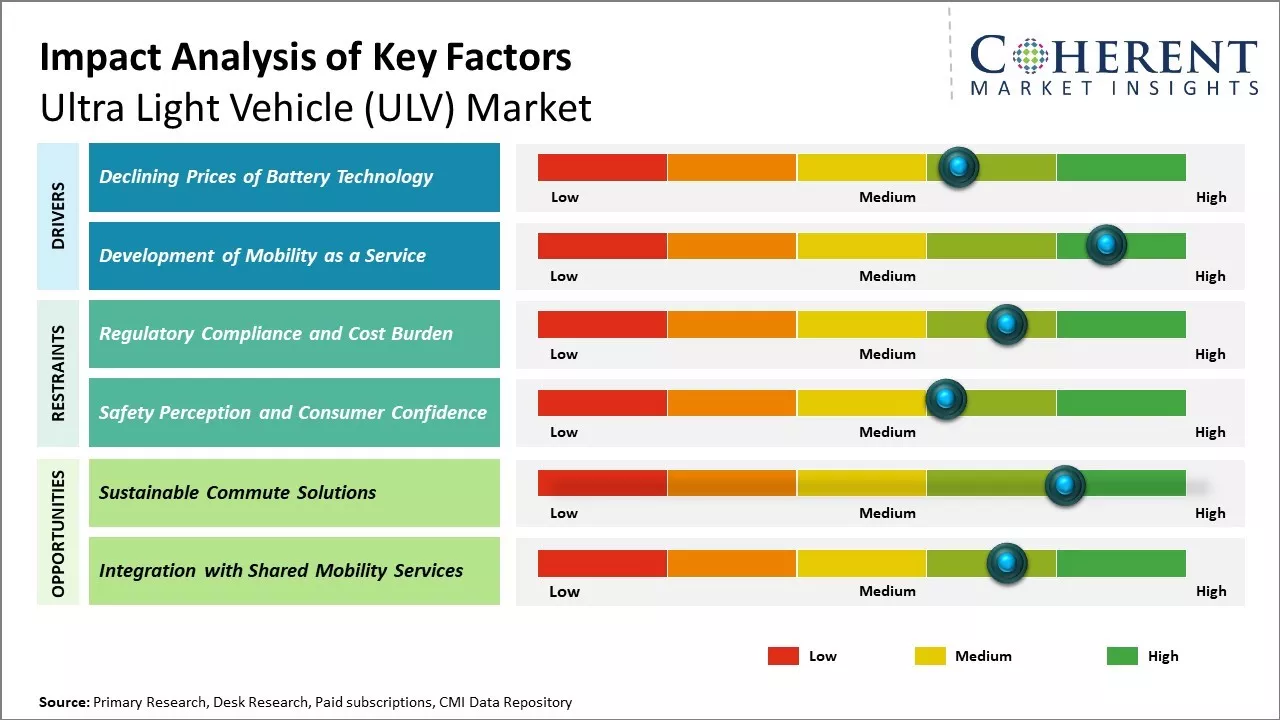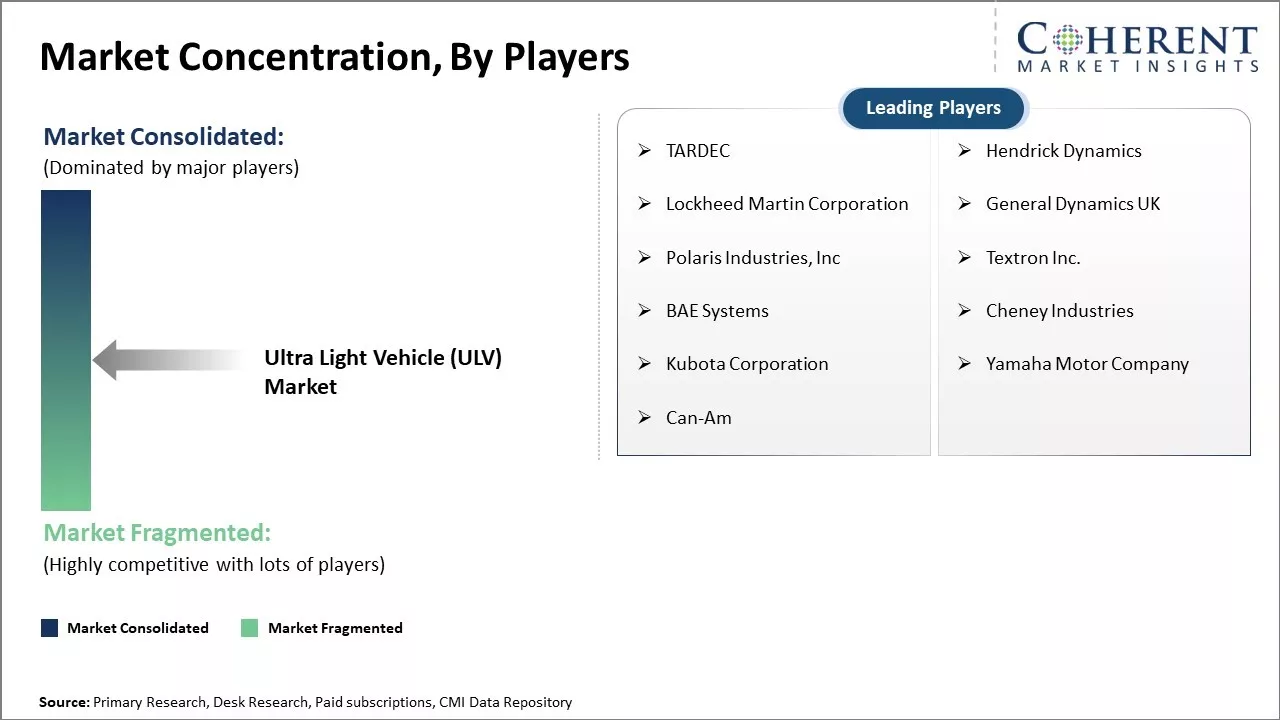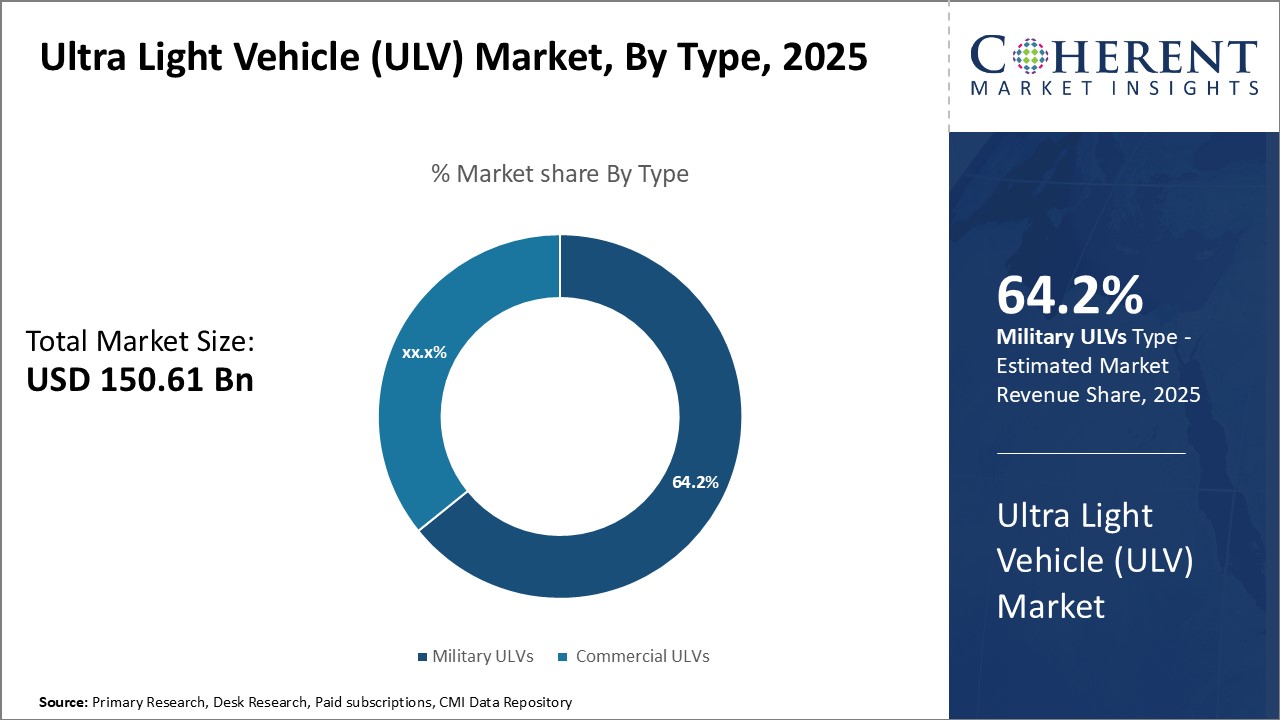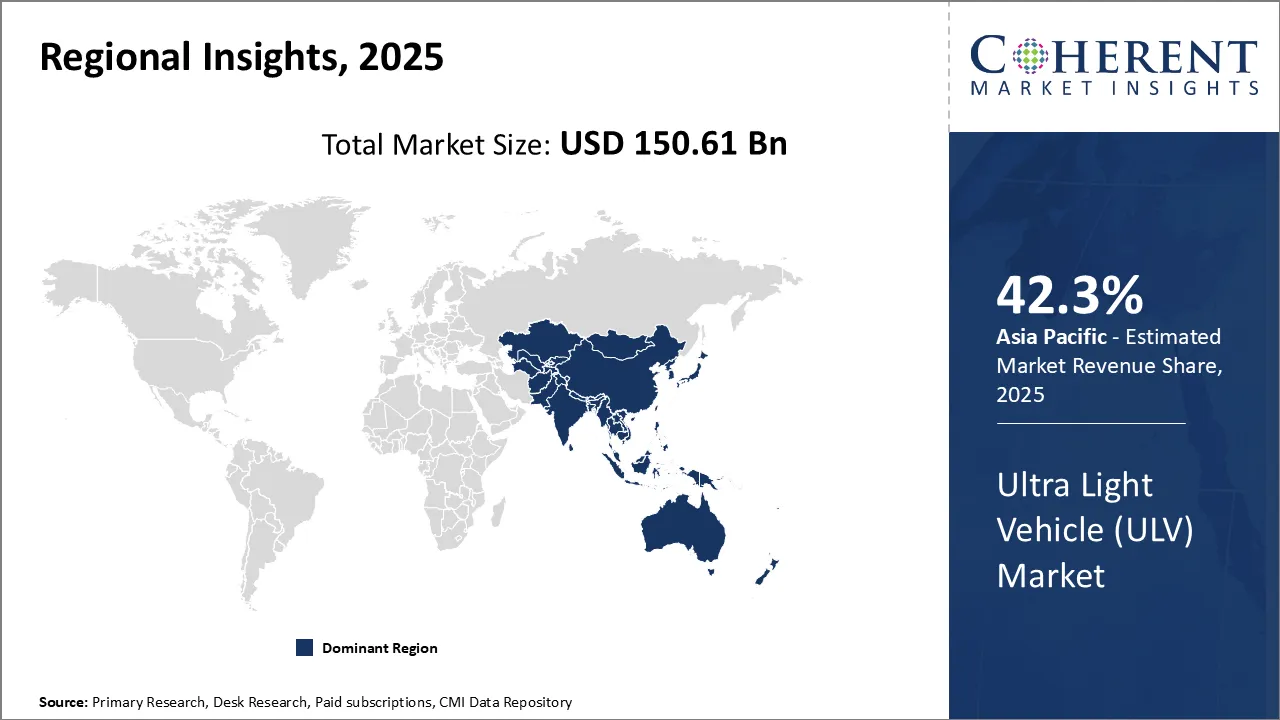The Ultra Light Vehicle (ULV) market is estimated to be valued at USD 150.61 Billion in 2025 and is expected to reach USD 253.31 Billion by 2032, growing at a compound annual growth rate (CAGR) of 7.7% from 2025 to 2032.

Discover market dynamics shaping the industry: Request sample copy
The Ultra Light Vehicle market has been witnessing significant growth over the past few years driven by factors such as the growing demand for eco-friendly mobility solutions and advancements in battery technologies. With an increasing emphasis on reducing vehicular emissions, there is a growing momentum towards the adoption of electric ultra-light vehicles for last-mile connectivity. Original Equipment Manufacturers are heavily investing in developing ULV models with improved performance capabilities and longer driving ranges per charge. Several countries have also introduced favorable policies and initiatives to promote electric mobility, which is creating a conducive environment for the widespread adoption of ultra-light EVs. However, high manufacturing costs and lack of standardization continue to impede the faster penetration of ULVs to some extent.
Declining Prices of Battery Technology
The declining costs of lithium-ion battery technology over the past decade has enabled automobile manufacturers to produce electric vehicles at competitive prices against their gasoline counterparts. This decline in battery costs has been a major catalyst enabling the development of ultra lightweight vehicles which requires smaller battery packs. As battery pack costs continue their downward trajectory, manufacturers now have more pricing flexibility to produce small electric vehicles aimed at urban mobility without compromising significantly on range. The constraints of high battery costs that hindered the development of efficient and low-cost mobility solutions in the past are dissolving. Ongoing battery innovations such as solid-state technologies also promise to drive down costs and energy densities even further. This helps fuel optimism that intelligent ultra light designs combining aerodynamics, composite materials, and optimized packaging can succeed in urban markets where space is limited but driving distances are short. Lower costs open up opportunities for unique vehicle architectures not previously considered commercially viable.

Get actionable strategies to beat competition: Request sample copy
Development of Mobility as a Service
The emergence of shared mobility solutions through vehicle subscription services, car sharing, ride-hailing, and rental schemes present a sizeable market opportunity for ultra light electric vehicles. These services aim to address people's transport needs in urban areas through on-demand access rather than individual ownership. For a provider of such mobility services, small low-cost vehicles designed for intra-city use could serve their business needs well by allowing for flexible scaling, high vehicle utilization rates and reduced operating expenses per ride given their lower purchase price compared to conventional vehicles. Companies operating these services are incentivized to pass on cost savings to customers to gain market share over personal car ownership. Growing acceptance of shared mobility models among consumers indicates that the demand for such innovative transport solutions could rise steadily. This helps bolster the business for service providers and manufacturers to collaborate on developing purpose-built ultra light electric vehicles for shared mobility applications.
Key Takeaways of Analyst:
The Ultra Light Vehicle (ULV) market is poised to experience strong growth over the next five years. Driven by the increasing demand for fuel-efficient and low-emission vehicles for last-mile delivery applications. Moreover, the growing e-commerce industry is also boosting the need for delivery vehicles that can efficiently navigate through congested city roads and traffic. ULV's compact size and maneuverability make them an ideal last-mile delivery solution.
However, limited driving range of ULV's and lack of sufficient charging infrastructure remain key challenges. Most ULV models have a driving range of 50-100 miles on a single charge which limits their usage. Also, limited number of public charging stations pose issues for fleet operators. Battery costs also make ULVs expensive compared to traditional delivery vehicles.
Asia Pacific currently dominates the ULV market owing to favorable government policies promoting eco-friendly mobility solutions. Especially in the China, the growing popularity of online shopping and focus on reducing pollution levels from freight transport are driving the ULV adoption. Europe is also emerging as another major region with the U.K. and Germany at the forefront of deploying ULV fleets for parcel and food delivery applications.
Market Challenges: Regulatory Compliance and Cost Burden
Governments in key markets are enforcing stringent safety and emissions standards, which consequently elevate the production expenses of ULVs. Moreover, there exists a consumer perception that ULVs, with their compact dimensions, might compromise safety compared to traditional vehicles. Breaking into densely populated urban landscapes, where public transport like buses and metros reign supreme, presents yet another hurdle. Manufacturers must strategize to enhance brand visibility and sway consumer sentiment by highlighting the advantages of ULVs.
Market Opportunities: Sustainable Commute Solutions
Growing traffic congestion and focus on lowering carbon footprint is driving the demand for alternative commute options. ULVs offer a sustainable solution for intra-city travel needs. They also provide opportunity to tap into the burgeoning shared mobility markets through partnerships with major ride-sharing and rental companies. With more people residing in cities, first and last mile connectivity needs exist which can be met by ULVs.

Discover high revenue pocket segments and roadmap to it: Request sample copy
In terms of Type, increasing defense modernization programs
Military ULVs is expected to contribute the highest share of 64.2% in 2025, driven primarily by defense modernization initiatives across major markets.
As countries look to upgrade their armed forces with advanced yet affordable equipment, ULVs provide an attractive solution. Their small size and payload capability allows them to perform vital tasks such as border surveillance, transportation of supplies to remote outposts, and intelligence gathering. Compared to heavier vehicles, ULV's offer greater mobility and can access terrain that may be inaccessible to other vehicles.
Factors such as changing nature of warfare, rise of non-state actors, and emphasis on network-centric operations have underscored the need for enhanced situational awareness and flexibility on the battlefield. ULVs equipped with advanced sensors and communication systems address this need well. Their low acquisition and operational costs also make them an economically viable choice for militaries looking to modernize without overstretching budgets. Additionally, the development of hybrid-electric and electric variants point to lower lifetime costs due to reduced fuel and maintenance expenses.
Key militaries around the world have launched procurement programs that will significantly augment their existing ULV fleets over the next decade. For instance, the U.S. Army's efforts to develop electric-powered ULVs for logistical support roles. Similar initiatives are underway in Europe and Asia Pacific as well to leverage ULV capabilities. While concerns around payload limitations and vulnerability remain, ongoing technological advancements are expanding the range of military tasks ULVs can perform. With defense budgets expected to grow in the coming years, the military ULV segment is well-positioned for continued market leadership.
In terms of End Users, strategic emphasis on logistics modernization
Defense is expected to contribute the highest share of 62.08% in 2025. This is driven primarily by the strategic emphasis militaries are placing on logistics and supply chain modernization. ULVs enable efficient transportation of troops, supplies and equipment even in remote terrains unreachable by heavier vehicles. Especially for nations with diverse and challenging topographies, ULVs have become an indispensable asset for logistical flexibility.
Capabilities such as all-terrain drivetrains, higher payloads and longer ranges are expanding the scope of defense applications. Beyond traditional logistical roles, ULVs are increasingly being utilized for combat support, communications relay, border surveillance and homeland security. Their modular designs support integration of specialized equipment including sensors, weaponry and electronic countermeasure suites.
Moreover, the use of electric and hybrid-electric ULV variants demonstrates the sector's focus on sustainability and lower lifetime costs. Ease of maintenance and reduced reliance on fuel resupply lend strategic and economic advantages. As defense networks become more smartly integrated, multi-purpose ULV platforms will play a bigger role in logistics automation and syncing of supply chains.
Overall, the defense segment is fueling innovation that will not only retain the ULV relevance for logistical operations but also enlarge their scope into intelligence, reconnaissance, and combat support duties. Their unique blend of mobility, payload and costs will keep ULVs a mainstay in modernizing fleets globally over the coming decade.

Need a Different Region or Segment? Customize now
The Ultra Light Vehicle (ULV) market is expected to be dominated by the Asia Pacific region in 2025, capturing a significant market share of 42.3%. The region is experiencing rapid growth in its military capabilities and space programs, leading to a surge in the demand for military ULVs for reconnaissance, border patrol, and other critical applications. Additionally, growing investments in research and development (R&D) for electric vehicles in this region are expected to accelerate the adoption of electric ULVs for various commercial applications. These electric ULVs could be particularly attractive for agriculture, disaster relief efforts, and even ecotourism due to their potential for lower environmental impact.
Furthermore, the Asia Pacific region is poised for the highest market CAGR of 9.23% in 2025. This high growth rate is fuelled by the factors mentioned above, along with the potential for increasing investments in infrastructure development across the region. Infrastructure development could create new demand for ULVs for various utility purposes. As a result, the Asia Pacific region is well-positioned to be a leader in the Ultra Light Vehicle market over the foreseeable future.
Ultra Light Vehicle (ULV) Market Report Coverage
| Report Coverage | Details | ||
|---|---|---|---|
| Base Year: | 2024 | Market Size in 2025: | USD 150.61 Bn |
| Historical Data for: | 2020 To 2024 | Forecast Period: | 2025 To 2032 |
| Forecast Period 2025 to 2032 CAGR: | 7.7% | 2032 Value Projection: | USD 253.31 Bn |
| Geographies covered: |
|
||
| Segments covered: |
|
||
| Companies covered: |
TARDEC, Hendrick Dynamics, Lockheed Martin Corporation, General Dynamics UK, Polaris Industries, Inc, Textron Inc. , BAE Systems , Cheney Industries, Kubota Corporation, Yamaha Motor Company, and Can-Am |
||
| Growth Drivers: |
|
||
| Restraints & Challenges: |
|
||
Uncover macros and micros vetted on 75+ parameters: Get instant access to report
Share
Share
About Author
Gautam Mahajan is a Research Consultant with 5+ years of experience in market research and consulting. He excels in analyzing market engineering, market trends, competitive landscapes, and technological developments. He specializes in both primary and secondary research, as well as strategic consulting across diverse sectors.
Missing comfort of reading report in your local language? Find your preferred language :
Transform your Strategy with Exclusive Trending Reports :
Frequently Asked Questions
Joining thousands of companies around the world committed to making the Excellent Business Solutions.
View All Our Clients
US Reciprocal Tax Impact Analysis On Ultra Light Vehicle (ULV) Market
Stay updated on tariff changes with expert insights and timely information